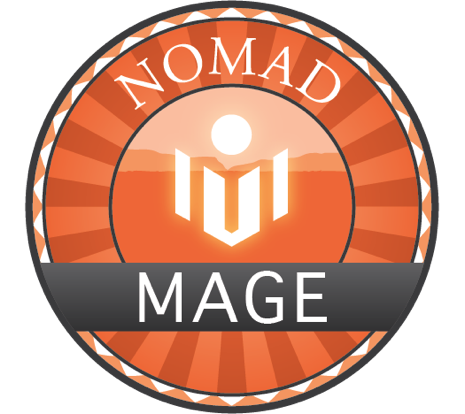WP Hammer Is A Data Privacy Tool For WordPress Developers

However, copying a live site does present some problems, especially where data privacy and security are concerned. Busy WordPress sites can be stuffed to the rafters with sensitive data. Site owners go to great lengths to keep this data secure, but staging and development environments are not usually under such stringent control. When WordPress professionals copy a site to their laptop or a dev server, private data, user records, hashed passwords, and lots of other data that the developer doesn’t strictly need come along for the ride.
WP Hammer is a useful tool for removing the privacy risks of creating testing sites that are exact copies of the live site. It is capable of stripping out specific types of private data while leaving the rest of the site’s data intact — developers usually want at least some of the site’s records in their dev versions for testing.
WP Hammer is capable of:
- Cleaning up user emails so they aren’t accessible in dev copies.
- Removing hashed user passwords from the database.
- Replacing existing posts with dummy posts generated by WP Hammer.
- Removing extra users — developers need some users so that testing sites accurately model the live site, but they don’t usually need all a site’s users.
- Removing extra posts.
The last of these examples shows how WP Hammer can be used for more than privacy and security. Large sites can have thousands or even tens of thousands of posts. Developers neither want nor need to copy every post on a large site. It doesn’t provide any particular advantage and it’s a lot of data to deal with. WP Hammer can remove extra posts and leave developers with a sample sufficient for testing and quality assurance.
Site owners often operate under strict data privacy and regulatory frameworks; they couldn’t share all of the information in their database with outside developers and WordPress professionals even if they were inclined to. WP Hammer gives site owners a fast and easy way to remove non-essential data from the WordPress database before handing it over to a third party.

 If you’re new to WordPress and want to create custom page layouts, the learning curve is steep. At the very least you need a passing familiarity with PHP, HTML, and CSS — possibly JavaScript too. All of which might seem a bit much if all you want to do is create a custom landing page for a product or make some art-direction tweaks to a blog post.
If you’re new to WordPress and want to create custom page layouts, the learning curve is steep. At the very least you need a passing familiarity with PHP, HTML, and CSS — possibly JavaScript too. All of which might seem a bit much if all you want to do is create a custom landing page for a product or make some art-direction tweaks to a blog post. Good developers never stop learning.
Good developers never stop learning. Soliciting and collecting donations are the core fundraising activities of many nonprofits. It’s also the most expensive. Traditional nonprofit fundraising techniques include event hosting, direct solicitation, mass mailing, and cold calling. Some of these techniques have a high chance of securing donations, but also a high associated cost that eats into the money available for fulfilling the nonprofit’s core goals. Other strategies have a low success rate per person, but are reasonably successful if the nonprofit can reach out to enough people — a process which can also prove quite expensive.
Soliciting and collecting donations are the core fundraising activities of many nonprofits. It’s also the most expensive. Traditional nonprofit fundraising techniques include event hosting, direct solicitation, mass mailing, and cold calling. Some of these techniques have a high chance of securing donations, but also a high associated cost that eats into the money available for fulfilling the nonprofit’s core goals. Other strategies have a low success rate per person, but are reasonably successful if the nonprofit can reach out to enough people — a process which can also prove quite expensive. I’m sure you’re all aware of the Panama Papers: a leak of epic proportions that exposed the offshore dealings of the rich and famous. Panamanian law firm Mossack Fonseca was breached, and well over a terabyte of data handed over to journalists, who are going through it with a fine-tooth comb. The leak has given rise to headlines and embarrassments from Washington to Reykjavik. It’s not known exactly how the data was leaked, but we do know that Mossack Fonseca is surprisingly bad at online security. As
I’m sure you’re all aware of the Panama Papers: a leak of epic proportions that exposed the offshore dealings of the rich and famous. Panamanian law firm Mossack Fonseca was breached, and well over a terabyte of data handed over to journalists, who are going through it with a fine-tooth comb. The leak has given rise to headlines and embarrassments from Washington to Reykjavik. It’s not known exactly how the data was leaked, but we do know that Mossack Fonseca is surprisingly bad at online security. As  One of WordPress’s great strengths is the plugin ecosystem. Developers have created thousands of plugins — most of which are free — that add any functionality you can imagine. Many businesses are built on WordPress, and some of those businesses depend on the plugins they use. What happens if those plugins go away?
One of WordPress’s great strengths is the plugin ecosystem. Developers have created thousands of plugins — most of which are free — that add any functionality you can imagine. Many businesses are built on WordPress, and some of those businesses depend on the plugins they use. What happens if those plugins go away? In preparation for the imminent opening up of
In preparation for the imminent opening up of 








